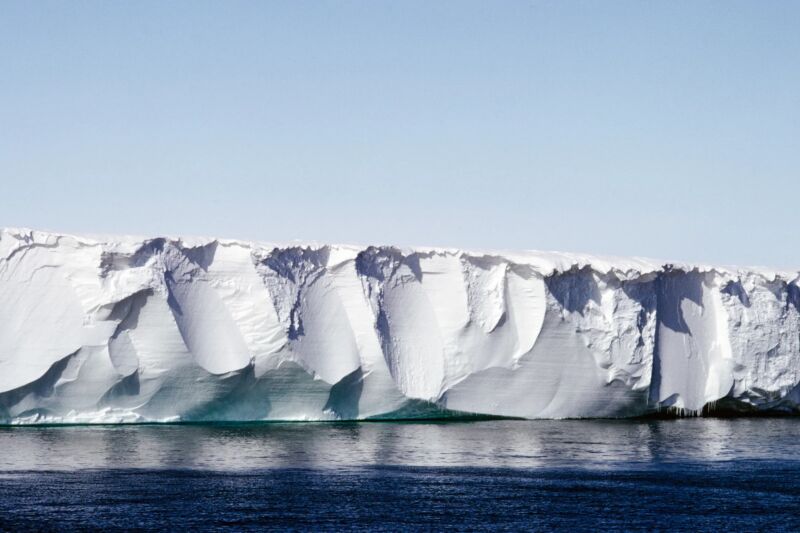
Enlarge (credit: De Agostini Picture Library | Getty Images)
Lake Whillans is a strange body of water, starting with the fact that there is liquid to fill it at all. Though buried under more than 2,000 feet of Antarctic ice, its temperatures climb to just shy of 0° Celsius, thanks to a combination of geothermal warmth, intense friction from ice scraping rock, and that thick glacial blanket protecting it from the polar air. Given the immense pressure down there, that’s just balmy enough to keep the lake’s water watery. Stranger still, Lake Whillans is also teeming with life. One survey a decade ago found thousands of varieties of microscopic critters, thought to be feeding on nutrients left by seawater that sloshed into the basin several millennia ago, when the glaciers last pulled back.
More recently, Chloe Gustafson, a geophysicist at Scripps Institution of Oceanography, arrived on the remote stretch of ice above Lake Whillans with a different mystery in mind: What’s happening underneath that lake? Antarctic researchers had long suspected the plumbing below the glacier went much deeper than they could see. Any groundwater beneath the lake would have implications for how the ice up above moves oceanward, and thus for how quickly it might contribute to rising seas. But they couldn’t definitively prove what groundwater was there. It was too deep, too ice-covered to map with the traditional tools of glaciology, like bouncing radar signals off the ice or setting off explosives and listening to the shockwaves.





